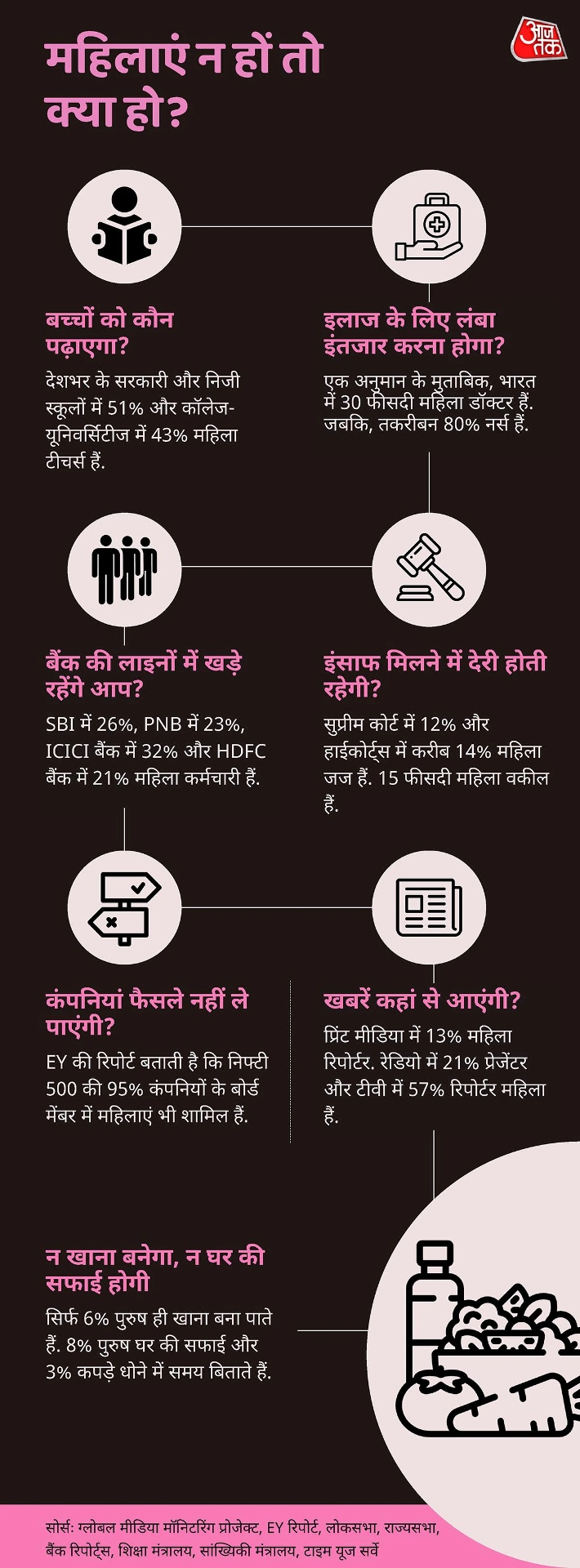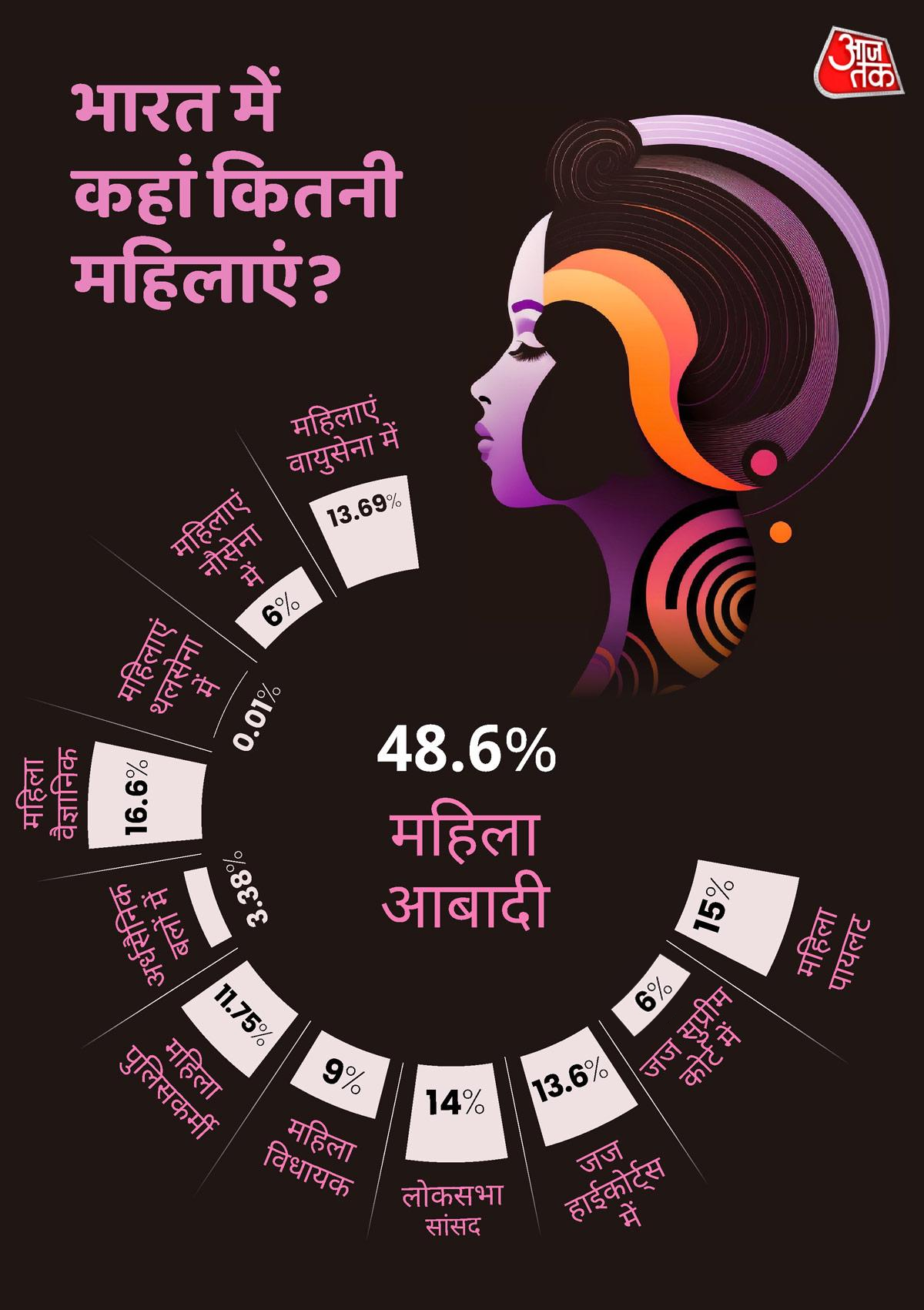Imagine a world where you wake up to find no mothers, sisters, daughters, or partners around you. As you leave for work with a puzzled mind, surprise hits - not a single female colleague is at the office. An all-male news team announces that women have unexpectedly taken the day off.
This scenario may seem far-fetched, yet it prompts us to consider the impact of women opting out even for just a day.
In past years, American women have staged a similar protest, highlighting their invaluable contributions by refraining from work and purchases on International Women's Day.
Today marks the same celebratory day. Let's ponder: What chaos and clarity could arise if every woman decided to disappear or take leave? The consequences would extend far beyond your wildest predictions.

Source: aajtak
How Do Women Fare in Society Today?
- Demographics:
According to the Ministry of Statistics, by 2021, India's population was estimated to be around 1.36 billion, with women constituting 48.6%. Interestingly, the growth rate of women's population surpassed that of men - 1.10% to 1.07%, respectively.
- Education:
While male literacy escalated from 27.2% in 1951 to 84.7% in 2017, female literacy also made significant strides, rising from 8.9% to 70.3% during the same period. The rates continue to improve, showcasing an upward trend in women's education.
- Workforce:
However, the World Bank reports that women's representation in India's labor force was below 21% in 2019. This indicates a vast majority of potential female workers not actively seeking employment. Concurrently, 35% of women engage in domestic help, against a 9% male counterpart.
- Politics:
The legislative landscape presents a challenge with women holding only 15% of positions in Lok Sabha and barely 14% in Rajya Sabha. Overall, women constitute just 9% of all state legislators.
- Courts:
At the apex of the judicial pyramid, only two of the 31 judges in Supreme Court are women. High Courts across the nation mirror this disparity, painting a stark picture of gender imbalance within the judiciary.
- Military:
Women's presence within the armed forces is also minimal, notably higher, however, within medical and dental branches.
- Police and Paramilitary:
As of January 2022, women constituted 11.75% of the police force, with a slightly better representation in the central forces and Assam Rifles.

Source: aajtak
Yet, Women Are No Less Capable
A recent State Bank of India report suggested that women contribute 7.2 unpaid hours of work daily, which would equate to a staggering ₹22.7 lakh crore annually, tantamount to 7.5% of India's GDP.
As per the International Labor Organization, women around the globe devote approximately 1,640 hours annually to unpaid tasks, equaling an economic value of $11 trillion or 9% of the global GDP.
A 2010 World Bank study in Brazil revealed that when women earn more than men, they prefer to invest in meaningful improvements, like education and healthcare for children — decisions that genuinely make a difference.




